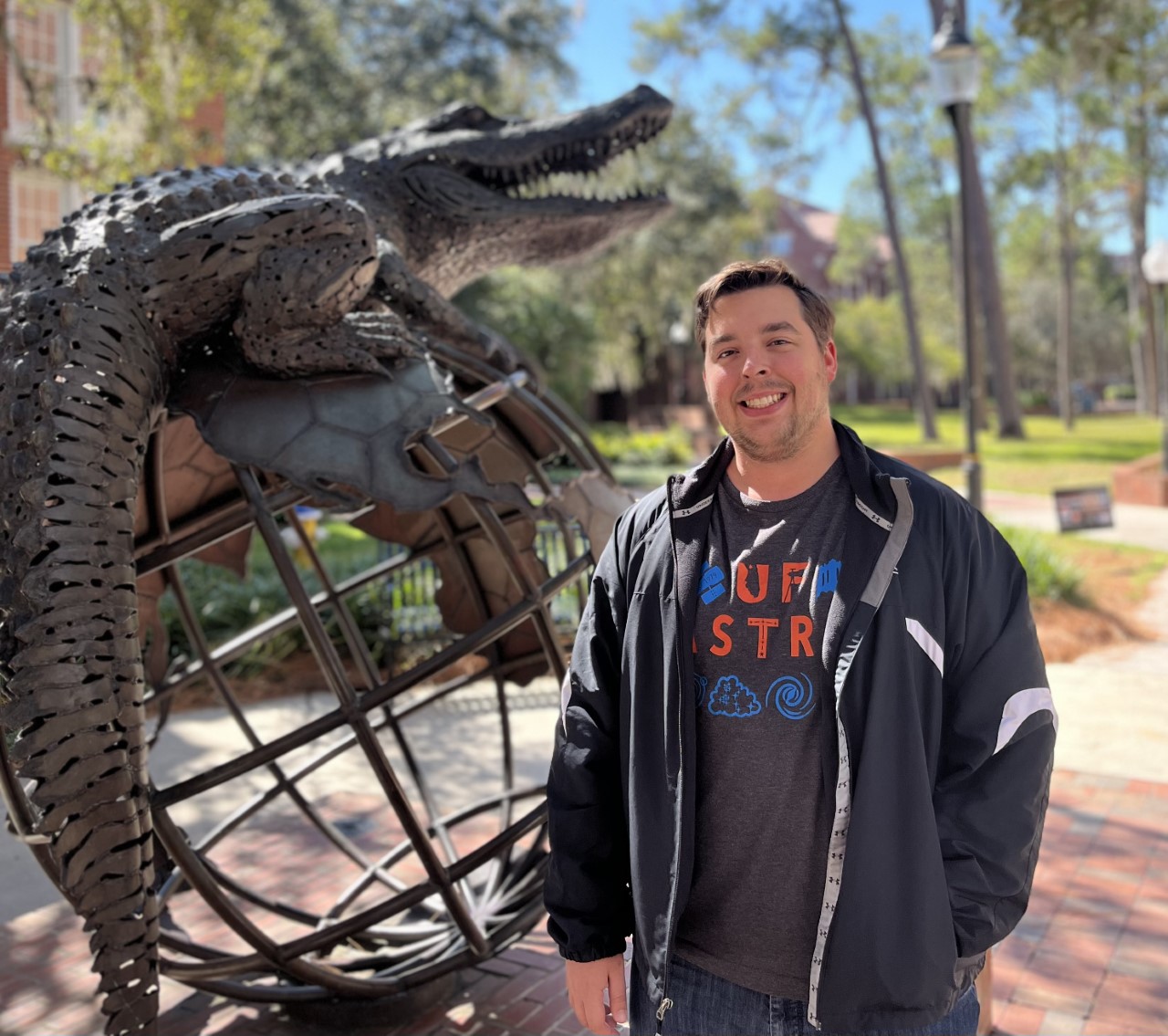By Joey Weslo — November 2022
NICHOLAS BARTH, a fourth-year University of Florida graduate student pursuing a Ph.D. in Astronomy, has been chosen as one of only 29 researchers out of 222 applicants to receive the esteemed Future Investigators in NASA Earth and Space Science and Technology (FINESST) grant.
Barth was awarded $145,000 over three years to support his research hunting the vast cosmos for the Sun’s long-lost siblings. The Sun’s solar siblings were born 4.5 billion years ago when a supernova shock wave animated the Sun’s natal gaseous nebula, before gravitational effects pulled the young stars far across the galaxy. Identifying the estimated hundreds or thousands of solar siblings sheds light onto the formation history of our Solar System.
“My interest in finding solar siblings is not only in the exciting discoveries we could make observing stars born along with the Sun, but also in the methodology behind the project,” said Barth. “(This includes) the ability to pick out a cluster of stars long dispersed across the Milky Way using machine learning techniques. By finding solar siblings, we can open a whole new window into the chemical composition of the early Solar System.”
The FINESST grant is available to graduate students pursuing a master’s or Ph.D. in earth or space sciences-related disciplines. Each applicant must submit a well-defined research problem/activity and justify its scientific significance to NASA. The grant is awarded to four divisions – earth sciences, heliophysics, planetary science, and astrophysics. Each “Future Investigator” must have a Principal Investigator serving as their advisor.
Barth’s research belongs to the astrophysics division and his Principal Investigator for the project is UF Assistant Professor Rana Ezzeddine. Barth has worked with Ezzeddine over the past three years on projects involving the chemical abundances of stellar systems. He praises her guidance throughout his graduate years.
Barth looks forward to overcoming the difficulties posed by the nature of his research project.
“The process of finding solar siblings is equivalent to finding a needle in a football-sized haystack,” said Barth. “The computing power offered by Univ. of Florida’s HiPerGator supercomputer will help by implementing machine learning clustering algorithms to find solar siblings. Stars similar to the Sun often have many (similar) stronger elements producing (mirroring) absorption features in the (star’s) spectra.
In this light, each star’s elemental spectrum serves like a DNA test identifying siblings conceived in the same stellar nursery.
Once a star is identified with compatible elemental abundances, astronomers often seek to verify its chances of being a solar sibling by calculating the star’s precise motions and galactic position to enable tracing its path backwards in time. Astronomers can trace some stars back far enough to establish if they intersect 4.5 billion years ago with our forming Sun.
Last year, Quadry Chance, a UF astronomy graduate student researching in the exoplanet field, was also awarded the FINESST grant. Barth credits Chance for being an excellent resource in preparing his own proposal.
After completing his dissertation, Barth intends to explore data science or data analytics at organizations such as NASA.
Barth draws a direct line to his fascination taking his first astronomy classes in high school at his local Ball State University in Indiana, to the incredible experience provided by Univ. of Florida to work and observe on world-class telescopes around the world.
While the work is challenging, Barth said the experience is extremely rewarding. He suggests spending time at Univ. of Florida’s public telescope observing nights and visiting a local planetarium.
“The sense of wonder that accompanies seeing the night sky is enough to quiet any fears that astronomy is (only) a daunting field.”
